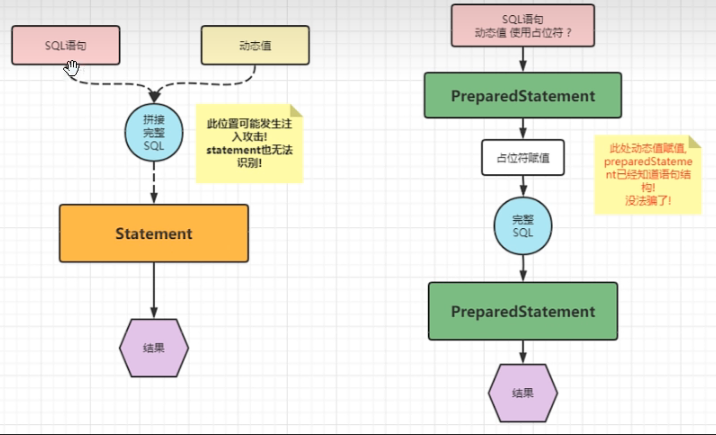1
2
3
4
5
6
7
8
9
10
11
12
13
14
15
16
17
18
19
20
21
22
23
24
25
26
27
28
29
30
31
32
33
34
35
36
37
38
39
40
41
42
43
44
45
46
47
48
49
50
51
52
53
54
55
56
57
58
59
60
61
62
63
64
65
66
67
68
69
70
71
72
73
74
75
76
77
78
79
80
81
82
83
84
85
86
87
88
89
90
91
92
93
94
95
96
97
98
99
100
101
102
103
104
105
106
107
108
109
110
111
112
113
114
115
116
117
118
119
120
121
122
123
124
125
126
127
128
129
130
131
132
133
134
135
136
137
138
139
140
141
142
143
144
145
146
147
148
149
150
151
152
153
154
155
156
157
158
159
160
161
162
163
164
165
166
167
168
169
170
171
172
173
174
175
176
| package com.plume.api.preparedstatement;
import org.junit.Test;
import java.sql.*;
import java.util.ArrayList;
import java.util.HashMap;
import java.util.List;
import java.util.Map;
public class PSCURDPart {
@Test
public void testInsert() throws ClassNotFoundException, SQLException {
Class.forName("com.mysql.cj.jdbc.Driver");
Connection connection = DriverManager.getConnection("jdbc:mysql:///pass", "root", "123456");
String sql = "INSERT into information(name,password,phone) values(?,?,?)";
PreparedStatement preparedStatement = connection.prepareStatement(sql);
preparedStatement.setObject(1,"test");
preparedStatement.setObject(2,"test");
preparedStatement.setObject(3,"12345678");
int rows = preparedStatement.executeUpdate();
if (rows > 0){
System.out.println("数据插入成功!");
}else{
System.out.println("数据插入失败!");
}
preparedStatement.close();
connection.close();
}
@Test
public void testUpdate() throws ClassNotFoundException, SQLException {
Class.forName("com.mysql.cj.jdbc.Driver");
Connection connection = DriverManager.getConnection("jdbc:mysql:///pass", "root", "123456");
String sql = "UPDATE information SET name =? WHERE id =?";
PreparedStatement preparedStatement = connection.prepareStatement(sql);
preparedStatement.setObject(1,"灰羽");
preparedStatement.setObject(2,1234);
int update = preparedStatement.executeUpdate();
if(update > 0){
System.out.println("修改成功!");
}else{
System.out.println("修改失败!");
}
preparedStatement.close();
connection.close();
}
@Test
public void testDelete() throws ClassNotFoundException, SQLException {
Class.forName("com.mysql.cj.jdbc.Driver");
Connection connection = DriverManager.getConnection("jdbc:mysql:///pass", "root", "123456");
String sql = "DELETE FROM information WHERE id =?";
PreparedStatement preparedStatement = connection.prepareStatement(sql);
preparedStatement.setObject(1,349314787);
int update = preparedStatement.executeUpdate();
if(update > 0){
System.out.println("删除成功!");
}else{
System.out.println("删除失败!");
}
preparedStatement.close();
connection.close();
}
@Test
public void testSelect() throws ClassNotFoundException, SQLException {
Class.forName("com.mysql.cj.jdbc.Driver");
Connection connection = DriverManager.getConnection("jdbc:mysql:///pass", "root", "123456");
String sql = "SELECT id,name,password,phone FROM information";
PreparedStatement preparedStatement = connection.prepareStatement(sql);
ResultSet resultSet = preparedStatement.executeQuery();
List<Map> list = new ArrayList<>();
ResultSetMetaData metaData = resultSet.getMetaData();
int columnCount = metaData.getColumnCount();
while(resultSet.next()){
Map map = new HashMap();
for (int i = 1; i <= columnCount; i++) {
Object value = resultSet.getObject(i);
String columnLabel = metaData.getColumnLabel(i);
map.put(columnLabel, value);
}
list.add(map);
}
System.out.println("list = "+ list);
resultSet.close();
preparedStatement.close();
connection.close();
}
}
|


.png)